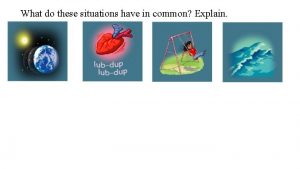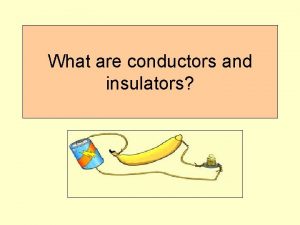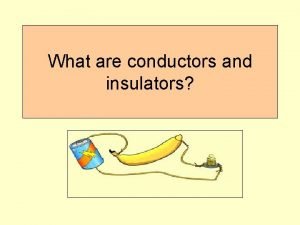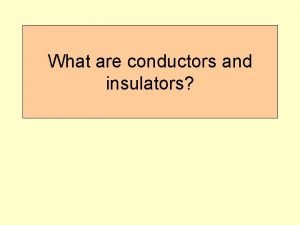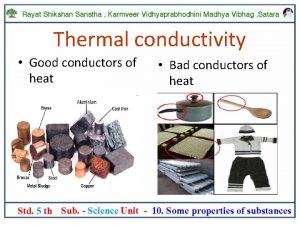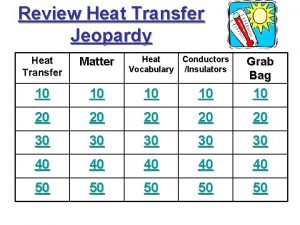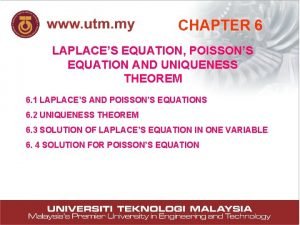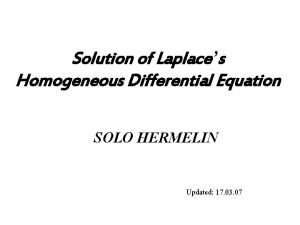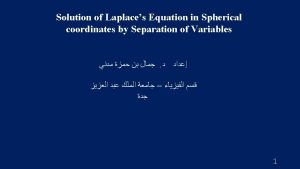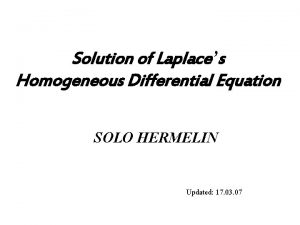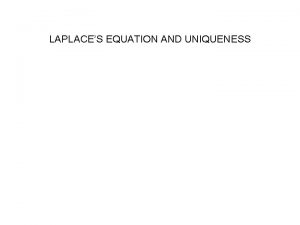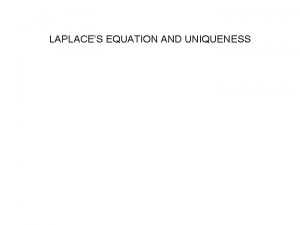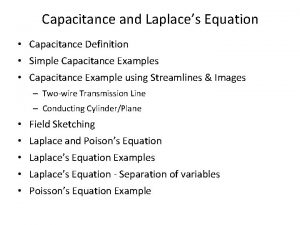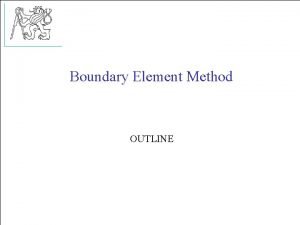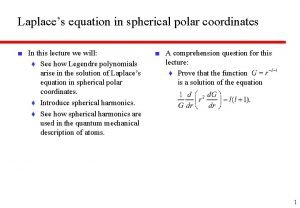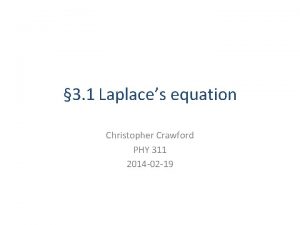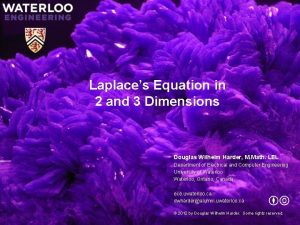3 1 Laplaces Equation Common situation Conductors in















- Slides: 15

3. 1 Laplace’s Equation Common situation: Conductors in the system, which are a at given potential V or which carry a fixed amount of charge Q. The surface charge distribution is not known. We want to know the field in regions, where there is no charge. Reformulate the problem.

+ Boundary conditions. (e. g. over a surface V=const. ) Important in various branches of physics: gravitation, magnetism, heat transportation, soap bubbles (surface tension) … fluid dynamics

One dimension Boundary conditions:

V has no local minima or maxima.

Two Dimensions Partial differential equation. To determine the solution you must fix V on the boundary – boundary condition. V has no local minima or maxima inside the boundary. A ball will roll to the boundary and out. Rubber membrane Soap film

Three Dimensions Partial differential equation. To determine the solution you must fix V on the boundary, which is a surface, – boundary condition. V has no local minima or maxima inside the boundary. Earnshaw’s Theorem: A charged particle cannot be held in a stable equilibrium by electrostatic forces alone.

First Uniqueness Theorem The solution to Laplace’s equation in some volume V is uniquely determined if V is specified on the boundary surface S. The potential in a volume V is uniquely determined if a) the charge density in the region, and b) the values of the potential on all boundaries are specified.

Second Uniqueness Theorem In a volume surrounded by conductors and containing a specified charge density, the electrical field is uniquely determined if the charge on each conductor is given.


Image Charges What is V above the plane? Boundary conditions: There is only one solution.

Image charge The region z<0 does not matter. There, V=0.

Induced surface charge: Force on q: Energy: Force exerted by the image charge Different from W of 2 charges!!


Example 3. 2 Find the potential outside the conducting grounded sphere.

 What do the three situations have in common
What do the three situations have in common What is the common situation in all these images
What is the common situation in all these images What do these pictures have in common
What do these pictures have in common Lcm of 12 and 18
Lcm of 12 and 18 Common anode and common cathode
Common anode and common cathode Lowest common multiple of 80 and 60
Lowest common multiple of 80 and 60 How to find lowest common factor
How to find lowest common factor Gcf of 72 and 90
Gcf of 72 and 90 Multiples of 9 and 21
Multiples of 9 and 21 What is an electrical conductor
What is an electrical conductor What are conductor?
What are conductor? What are conductors
What are conductors What are conductors
What are conductors Good and bad thermal conductors
Good and bad thermal conductors Insulators at home
Insulators at home Atomic structure of conductor
Atomic structure of conductor
